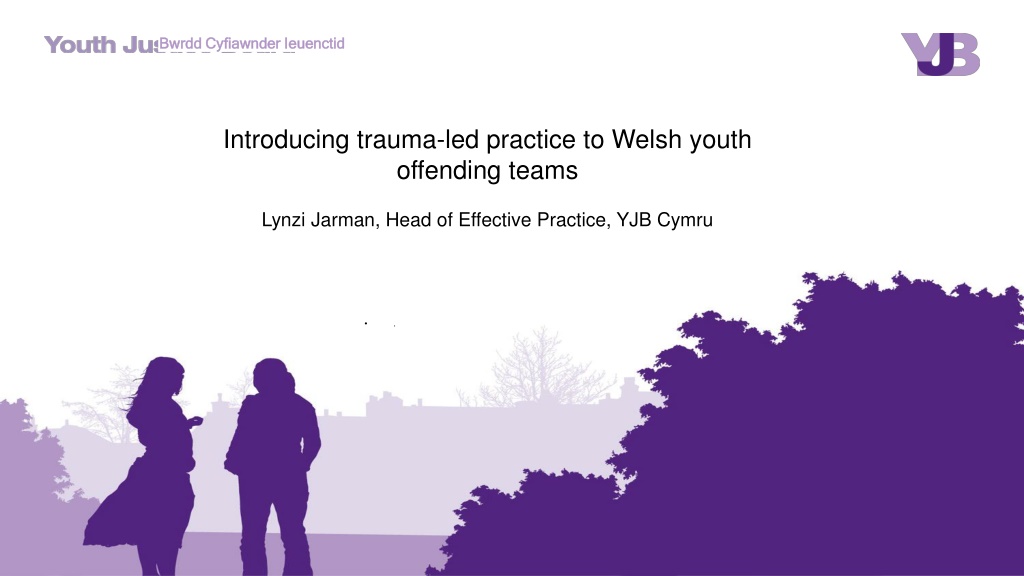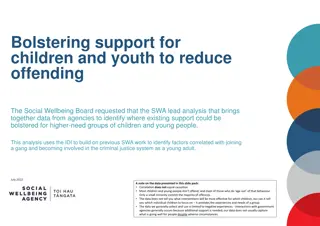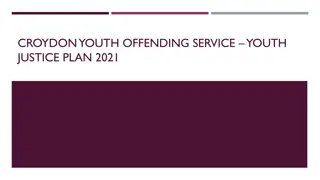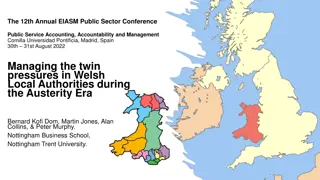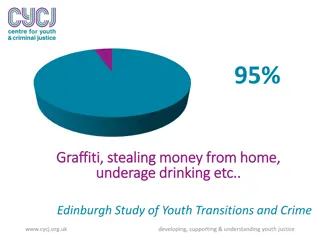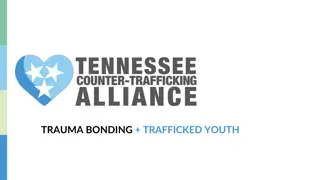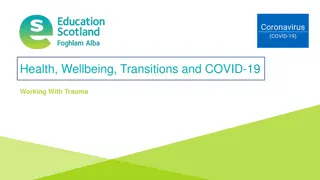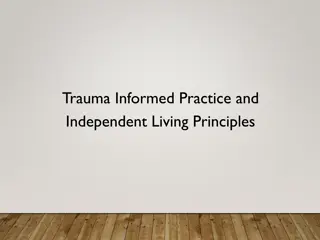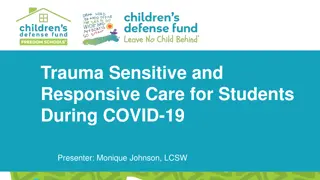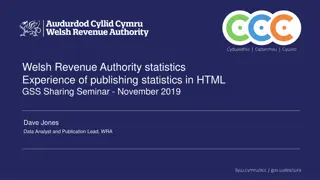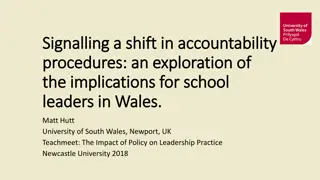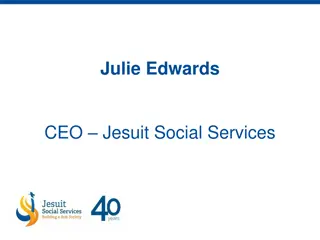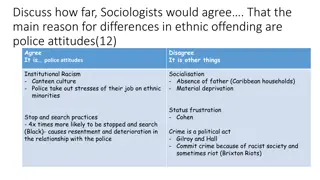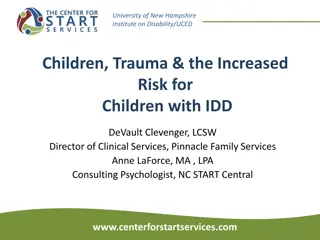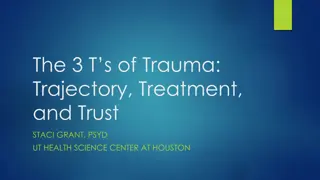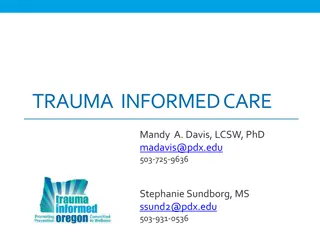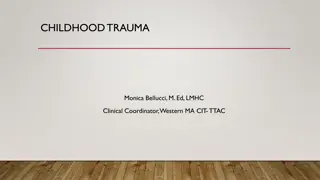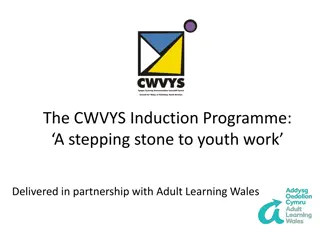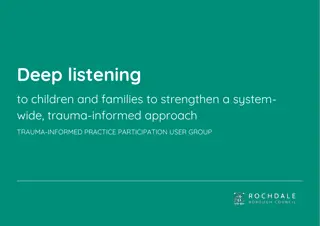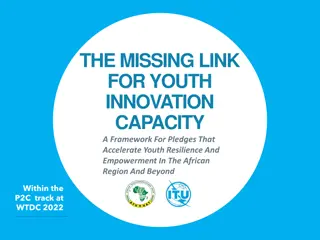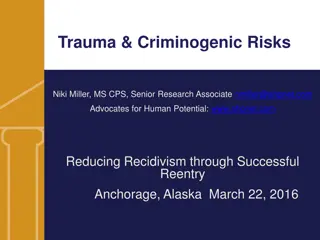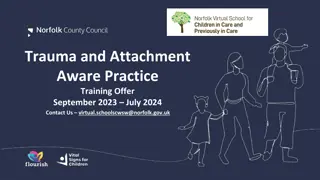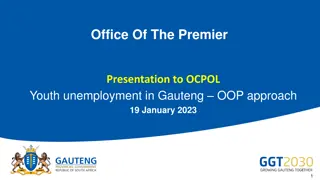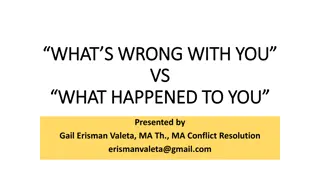Transforming Welsh Youth Offending Through Trauma-Led Practice
Introducing trauma-led practice in Welsh youth offending teams has shown significant positive outcomes such as a decrease in children with criminal records and in custody. The approach focuses on understanding and addressing the trauma that has impacted the development of young offenders, emphasizing the importance of consistent, supportive relationships for proper development.
Uploaded on Sep 23, 2024 | 0 Views
Download Presentation

Please find below an Image/Link to download the presentation.
The content on the website is provided AS IS for your information and personal use only. It may not be sold, licensed, or shared on other websites without obtaining consent from the author. Download presentation by click this link. If you encounter any issues during the download, it is possible that the publisher has removed the file from their server.
E N D
Presentation Transcript
Bwrdd Cyfiawnder Ieuenctid Bwrdd Cyfiawnder Ieuenctid Introducing trauma-led practice to Welsh youth offending teams Lynzi Jarman, Head of Effective Practice, YJB Cymru .
Bwrdd Cyfiawnder Ieuenctid Bwrdd Cyfiawnder Ieuenctid Fewer Welsh children with a criminal record Decrease in First Time 84% Entrants Total full year figures for each financial year 2008 - 2015
Fewer Welsh children in custody 75% Decrease in custody occupancy Snapshot occupancy comparing end of each July from 2008 - 2015
Bwrdd Cyfiawnder Ieuenctid Bwrdd Cyfiawnder Ieuenctid But A smaller more complex (??) court cohort with higher recidivism
Bwrdd Cyfiawnder Ieuenctid Bwrdd Cyfiawnder Ieuenctid What convinced us to try something different? 269 / 89% boys 34 / 11% girls 245 were 15 17 33 were 15 17 binary reoffending rate: 83.6% binary reoffending rate: 64.7% frequency rate: 3.68 frequency rate: 3.50 3 Black and 1 Asian boy 1 Black girl
It aint what you do, it s the way that you do it (and when) Children whose development has been damaged need time to recover lost ground Children need the consistency of a safe and trusted adult in order to develop properly Developmental problems do not always respond well to talking therapies.
Enhanced Case Management What the project looks like? TRM & associated training Multiagency team formulation meeting Clinical psychology case formulation report Clinical supervision & management support
So far, so good (??) Interim evaluation report: High degree of shared understanding about the model Mixed success at involving YOTs in the trial Lower than expected numbers of referrals Training is valued and seen as a good refresher Clinical supervision is viewed positively Participation by other agencies is good ECM has improved YP engagement with YOTs Overall attrition rates are described as low (detailed data pending) High level of fidelity to the model
So far, so good (??) Interim evaluation report: Positively impacted on YOT practice More effective at identifying underlying needs Better understanding of impact of early life problems Plans better tailored to needs around development & MH Increased confidence in sequencing interventions Staff are better equipped to engage young people in interventions Impact on relationships is a particular benefit Positive impact on management practices for ECM cases Attribution of changes in YP to ECM approach is still tentative with most stakeholders i.e. too early to tell , but
Other findings - Improved engagement by young people The formulation gives us the evidence we need to advocate for the young people. What helped John was him knowing we were really there for him. He had a felt experience of this through the relationship. Alex, and others under the ECM project, turn to us more quickly.
Other findings - Empowerment of YOT practitioners The formulation gives us the evidence we need to advocate for the young people. Having previously got frustrated by him the ECM has allowed us to feel less frustrated, to understand his past and previous trauma. The ECM work allowed the evidencing of his needs and the acknowledgement that there wasn t a service available to meet his educational needs, rather than putting him in an unsuitable educational placement and allowing him to fail.
Other findings - Use of formulation report more widely: Other agencies have been able to use the formulation report also for their purposes; e.g. applying for additional funding for education. Using the ECM to speak in Court has prevented another order being placed on him, which would have been detrimental to him and to his progress. - Supporting YOT referrals to CAMHS
